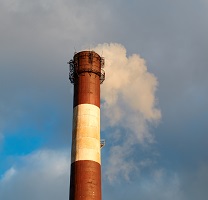Ditch Fast Fashion: Bad for the Environment and Your Wallet
Fast fashion is a term many Americans are familiar with. Forever 21, Old Navy, H&M, Xi, and hundreds of other retail stores are examples of fast fashion retailers. This means that they take the hottest runway looks, street style, and Insta-trends and rework them to fit a tighter budget. They charge cheap prices and the quality usually suffers. In addition to the quality of the items being sold, the laborers and environment are victims of this industry as well.
For young people without a full time job, it is difficult to afford ready-to-wear looks, or even sustainably made apparel without going broke. For many it is cheaper to pop into a store with a quirky name like “Q” and pick out a $10 version of the oversize $100 t-shirt Kylie Jenner wears all the time.
For the consumer, it may seem like there are no disadvantages for cheap, trendy clothes. After all, they are cheap! If it breaks, tears, rips, or the quality is not up to par, you may have only spent $5 on it. Who cares, right?
We all should care. The fashion industry is the second leading polluter to our planet’s resources. In addition to wreaking havoc on the forests and natural water sources to create synthetic fibers, the waste it produces in unimaginable. This video from Huffington Post details the amount of physical waste the fast fashion industry creates.
Aside from the enormous, inevitable environmental impact, the effects on the workers who create these dirt-cheap clothes are not so reputable either. From general poor working conditions to dangerous work accidents, these people are sometimes children, working for less than anyone earning minimum wage in America could imagine.
 These people create these $1 flip flops or that $20 knockoff of that Gucci dress for our consumption, only to have their handiwork literally thrown away after the trend dies.
These people create these $1 flip flops or that $20 knockoff of that Gucci dress for our consumption, only to have their handiwork literally thrown away after the trend dies.
Fast fashion is all about what is hot right now, not what will be cute in a year or so. When we shop at fast fashion retailers we waste our money. Granted, capitalism prohibits ethical consumerism in a lot of ways. A poor person cannot just go buy a $50 pair of pants because they do not want to contribute to the wastefulness of the industry. People buy what they can afford. However, there is an alternative from simply buying expensive designer clothing.
Second hand stores and consignment shops are everywhere. Goodwill, Buffalo Exchange, My Sister’s Closet, eBay, and thousands of other websites and stores offer new and gently used pre-owned clothing. Instead of throwing our clothing away when we are through with the trend or the garment, take it to a consignment store. Not only will you likely profit out of this, but you can also use store credit at many of these locations to purchase other unique clothing that you will love and cherish forever.
These shops carry clothing for all seasons. Don’t be afraid to look for your next winter coat at a second-hand store. They are usually still in style and you will always find classic pieces such as a black pea-coat available.
Changing shopping habits is extremely difficult while living in a culture that values and depends on blind consumerism. Even if you decide to donate that ancient sequin boho bag dying a slow death in your closet instead of throwing it away, it is a win for the environment and perhaps a little girl who wants a sequin purse but cannot afford to buy one for full price.
Resale and consignment is the most radical way you can alter your shopping habits right now. It will not happen overnight. I have been actively trying to change my habits over the course of two years. However, it has not only saved me money, but I feel better about the clothing I buy. I know that by purchasing staple pieces that will never go out of style, I will be less likely to get tired of it in 30 days. Fashion is an ever-changing industry-hopefully we can help it progress for the better.
















